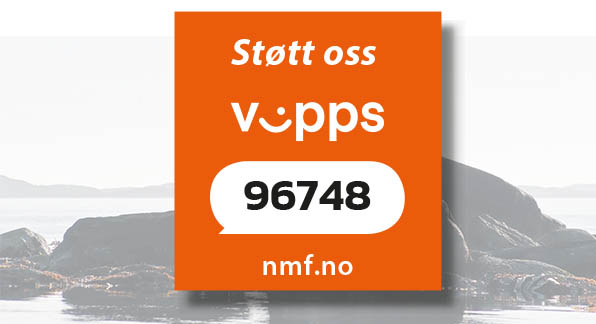Norwegian Gannet – Photo: Ole Andreas Drønen/Kyst.no
By Jan-Hugo Holten
Norwegian Environmental Protection Association (NMF) has since 2018 been involved in the idea of a slaughter ship for the farming industry.
An innovation that would improve animal welfare for the slaughtered salmon and cut up to 10,000 truck trains annually from Norwegian national and county roads. The ship was named Norwegian Gannet.
There is reason to believe that the Government, through Former Fisheries Minister Tom Harald Nesvik's sabotage plans to demand delivery/handling of sorted fish (refusal of dispensation) and had a connection with creating as good a basis as possible for the bridge and road project Hordfast and ferry-free E39. A case the government may be about to lose now. In that sense, the district court's decision is good news. For the time being.
The NMF will follow the case further, particularly with regard to whether the government comes up with more shenanigans. NMF is very surprised and disappointed by Erna Solberg's government and the attacks they have made on Norwegian Gannet and Havline.
The government's conversion decision was invalid
The fishing website Intrafish writes the following on 15 June 2020
Quotation;
On Monday, the Bergen District Court handed down a verdict in the so-called "Norwegian Gannet case". The court came to the conclusion that the Norwegian Food Safety Authority's decision on the approval of "Norwegian Gannet" and the Hav Line Methoden was correct. The government's conversion decision and rejection of Hav Line's application for dispensation was invalid.
The court has come to the conclusion that the decision, made by royal decree on 21 June 2019, on the domestic sorting of farmed fish according to the fish quality regulations, was grossly unreasonable.
These are the main elements in the district court's assessment:
- The government interpreted Section 17 of the Fish Quality Regulations - as it read in 2018 - incorrectly. Hav Line was right that Section 17 of the Fish Quality Regulations did not require domestic sorting. The Ministry of Industry and Fisheries' (NFD) conversion decision therefore lacked authority.
- The government's subsequent decision to uphold NFD's conversion was invalid on the basis of gross unreasonableness.
- Hav Line had legitimate expectations that the Norwegian Food Safety Authority and political leadership would approve Norwegian Gannet for its planned use.
- The district court rejected the state's argument during the district court case that consideration of the supervisory and sanctioning competence of the Norwegian authorities should dictate that Section 17, first paragraph, must be interpreted so that the sorting of the fish must take place domestically.
- The change in the political assessment of the company's operations after Nesvik became fisheries minister appeared sudden and unexpected for Hav Line. The District Court criticizes the NFD's and the Government's handling of this matter.
(Source: Intrafish)

Norwegian Gannet a shining environmental example
The ship is a shining example of the benefits that innovative thinking can bring. The ship removes 200 wagon trains from the road every week. The CO₂ emission per Kilograms of salmon transported are reduced by 46 per cent, according to the shipping company. The ship's engine is a hybrid engine.
"No one is in as much of a hurry as a dead salmon" has over the years been used as a slogan against using the sea route as an alternative for transporting Norwegian salmon from Western Norway to foreign countries. But forward-looking players in the salmon industry have since 2010 built the ground-breaking, Bergen-based ship "Norwegian Gannet" with state and county financial support.
Norwegian crew
The idea behind the ship is to combine the slaughtering and transport of fish from Norwegian farms to ports on the continent, initially to the reception facility in Hirtshals in Denmark. With 14 hauling machines, the ship has a total capacity of 160,000 tonnes of fish a year, a volume equivalent to all farming in Hordaland. The Bergen-registered ship has employed a crew of 100 people - all Norwegian.

In line with the Norwegian Food Safety Authority's intentions
The shipping company's investment is in line with the intention of the Norwegian Food Safety Authority. They believe that removing the transport of fish, using slaughterhouses and reduced and more gentle handling of fish results in significantly better fish welfare and a strong reduction in the risk of disease spreading, discharges and escapes. Better handling and cooling of the fish will also have a positive effect on meat quality and shelf life.
Our fight since The 1980s push for a healthier and sustainable farming industry is now met by players in the industry through this pioneer ship. We hope for a similar willingness to solve the other challenges we have asked the farming industry to clean up, says Kurt Oddekalv, leader of the Swedish Environmental Protection Agency.
The ship was christened in the heart of the world's salmon capital, i.e. Bryggen in Bergen on 17 November 2018, with around 4,000 people present. There was heavy symbolism in the fact that the christening took place in the city, which historically was the major shipping point for the export of Norwegian fish on keel to the continent.
The Government and the Storting have time and again stressed that the transport of goods must be moved from road to sea for environmental and traffic safety reasons. In 2018 at the latest, this was tightened when the government and the Storting adopted the National Transport Plan 2018–2029. The EU is also following up through the "Motorways by sea" project.





